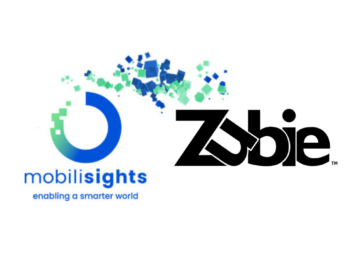
Managing a fleet of vehicles is a two-fold job. You direct, plan, and assign routes for drivers to reach their jobsites. Efficiency is literally mapped. On the other hand, you’re also managing the drivers themselves. As you know, everyone has a different driving style. Some may benefit the business while others may harm it.
Not many people instinctively think of a fleet tracking system as their source of help. Many first associate it with the operations of getting vehicles from point A to point B. But a good fleet tracking system can help you manage your drivers, so they don’t add to the growing costs of your business. In fact, using a fleet tracking software can help reduce company costs.
Here are three ways driver behavior can impact the business and how you can adjust it with insights from a fleet tracking system like Zubie.
1. Rapid Acceleration and Hard Braking
Zubie classifies rapid acceleration and hard braking as a +7 or -7 mph event in less than one second. If you’re accelerating, it’s the equivalent of going 0 to 60 in 9 seconds. To do this, you have to actually hit the gas pedal to the floor. The same applies for braking.
So, how does rapid acceleration and hard braking affect your business?
First and foremost, fuel efficiency drops dramatically with rapid acceleration. Vehicles try to maintain an efficient ratio of air and fuel in the engine (to deliver fuel economy). Hitting the gas hard wastes fuel. Consider the impact this will have on refueling if your staff is driving within the city (see image below).
Source: https://blog.automatic.com/the-hidden-costs-of-aggressive-driving-7828a9742fdc
If your drivers are rapidly accelerating at every stop and intersection, your fuel costs will skyrocket. By educating your drivers to gradually ease into their speed, you can cut gas expenditures easily.
On the flip side, let’s talk about hard braking. The pressure and energy behind hard braking not only wears out your brake pads, but can also cause damage to the rotors — subsequently driving up maintenance costs for your fleet. All that stress and energy is sent to your suspension — the ball joints, bushings, and wheel bearings. You’ll be replacing vehicles sooner rather than later, and we all know how much a vehicle costs.
2. Speeding
Risk directly correlates with speed. The faster you go, your chances for getting into an accident rise dangerously. Yeah, everyone speeds a little bit — typically, around 5 mph above the posted limit. But within your fleet tracking system, you’ll be able to identify those who do it excessively.
Why does it matter?
The higher the speed, the shorter the time a driver has to react to a situation. Let’s say another vehicle cuts you off or a pedestrian starts crossing the street. The driver’s ability to stop and avoid an accident becomes insurmountably harder. Suddenly, someone is filing a lawsuit against your business, costing you money. And with more accidents on record, insurance premiums rise. All of this hurts your revenue.
3. Needless Idling
According to Ford Motor Company, every hour a vehicle spends idling is equivalent to approximately 25 miles of driving. Disregarding the extra costs idling vehicles have to your business, there’s another lesson to discern from your fleet tracking system. Are your employees wasting time, sitting in the car or are they busy at their jobsite?
If your crew isn’t working, then not only are they wasting gas, they’re also not earning money for your business. Holding them accountable to their tasks and making them smart drivers helps you maintain a positive return on investment (ROI).
{{cta(‘59527620-1028-40e5-97f3-2df52ba7c011’)}}
